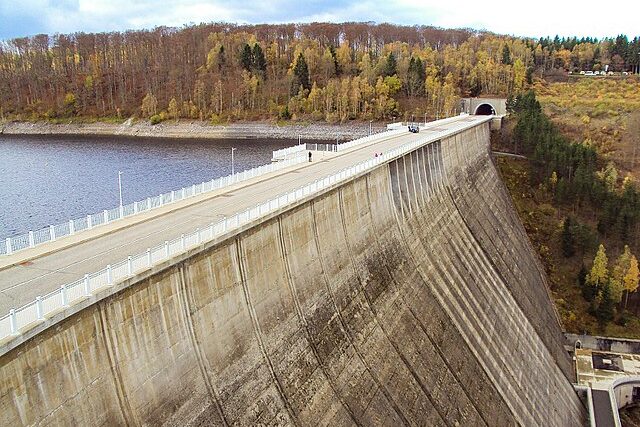
According to the study, the thousands of sediment-clogged dams threaten water supplies.
UN researchers have come to the conclusion that thousands of the world’s large dams are so clogged with sediment that they risk losing more than a quarter of their storage capacity by 2050, posing a threat to water security.
Dams and reservoirs will lose approximately 1.65 trillion cubic meters of water storage capacity to sediment by the middle of the century, according to a new study from the UN University Institute for Water, Environment, and Health.
The amount is comparable to the sum of India, China, Indonesia, France, and Canada’s annual water consumption.
The researchers claim that this is significant due to the fact that these massive dams are crucial global sources of hydroelectricity, flood control, irrigation, and drinking water.
“Global water storage is going to diminish – it is diminishing now – and that needs to be seriously taken into account,” the study’s co-author and institute director, Vladimir Smakhtin, told AFP.
Nearly 50,000 large dams in 150 countries were examined by researchers, and they discovered that approximately 16% of their water storage capacity had already been lost.
By the middle of the century, they estimated, that figure would rise to about 26% if buildup rates continued to rise at the same rate.
Dams prevent rivers from moving sediment downstream to wetlands and coastlines, reducing the amount of space available for water over time due to the accumulation of muddy deposits.
This, according to Smakhtin, “endangers the sustainability of future water supplies for many,” as well as posing dangers to power generation and irrigation.
Sediment accumulation can also result in flooding upstream, affecting wildlife habitats and coastal populations in the downstream area.
Sedimentation is a component of a broader problem: Tens of thousands of large dams will have reached the end of their intended lifespans by 2050.
The majority of the world’s 60,000 large dams, built between 1930 and 1970, were intended to last 50 to 100 years. After that, they run the risk of failing, which could affect more than half of the people who live downstream.
The definition of a large dam or reservoir is one that is higher than 15 meters (49 feet) or at least five meters tall and holds back no less than 3 million cubic meters of water.
The risk is made worse by global warming in ways that haven’t been fully measured yet.
“Climate change extremes like floods and droughts will increase, and higher intensity showers are more erosive,” Smakhtin said.
This not only makes it more likely that reservoirs will overflow, but it also accelerates the accumulation of sediment, which has an impact on the safety of dams, reduces the capacity for storing water, and reduces energy production in hydroelectric dams.
The study’s authors propose a number of solutions to the looming problems posed by reservoir sedimentation and aging dams.
Bypass, also known as sediment diversion, can redirect water flow down a different river channel.
The “decommissioning” of a dam to restore a river’s natural sediment flow is yet another strategy.
However, there is no one-size-fits-all solution to the problem of water storage, according to Smakhtin.
“The loss of water storage is inevitable for different reasons,” Smakhtin said. “So the question we should be asking is what are the alternatives?”
——————————————————————————
At Natural World Fund, we are passionate about stopping the decline in our wildlife.
The declines in our wildlife is shocking and frightening. Without much more support, many of the animals we know and love will continue in their declines towards extinction.
When you help to restore a patch of degraded land through rewilding to forests, meadows, or wetlands, you have a massive impact on the biodiversity at a local level. You give animals a home and food that they otherwise would not have had, and it has a positive snowball effect for the food chain.
We are convinced that this is much better for the UK than growing lots of fast-growing coniferous trees, solely to remove carbon, that don’t actually help our animals to thrive.
This is why we stand for restoring nature in the UK through responsible rewilding. For us, it is the right thing to do. Let’s do what’s right for nature!
Support our work today at https://naturalworldfund.com/ and join in the solution!

